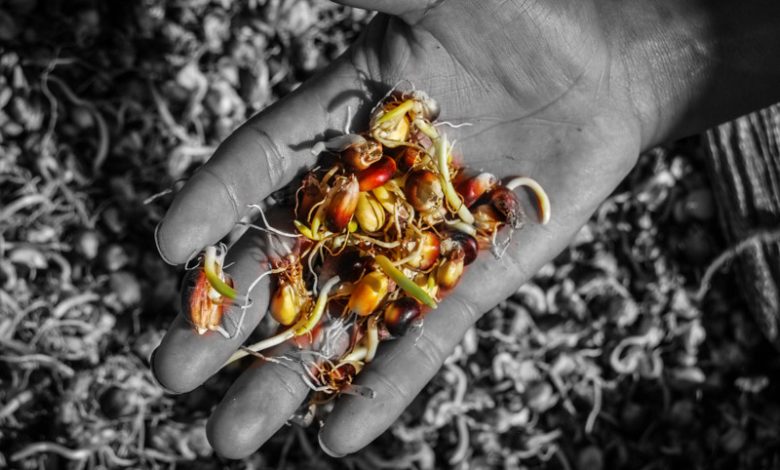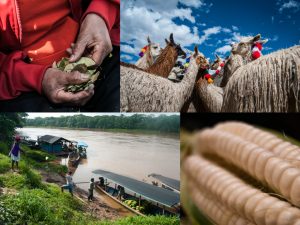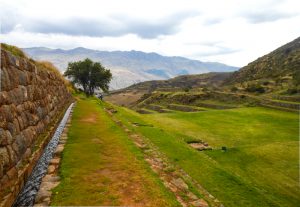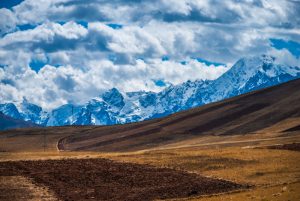Ayni in the Economic Organization of the Andean World

The Inca Empire’s economy was based on agriculture, the intensive cultivation of the Mother Earth, the Pachamama. With it the Incas ensured food supplies. The production of food varied according to the diverse ecological niches of a mountainous terrain. Nevertheless, the principle products were potatoes, corn, and coca. To these was dedicated greater attention than to other products.
The Inca Empire included the following climate zones.
The highlands: a cold and dry zone. For cultivation here the Incas relied on a system of terraces, called andenes, which were constructed on the sides of the mountains. They were filled with good dirt and fertilizer. The Incas irrigated them artificially through the use of stone lined canals. With these canals they transported water from distant places.

The puna or high grasslands: a cold and very dry zone of grasslands in which are raised alpacas and llamas. Watering any crops or the grasslands here was only by natural means, snowmelt from the high peaks.
The coast: is an arid, dry land. To cultivate the land in this zone first they needed to fertilize it and then rely on irrigation through the construction of irrigation canals

The jungle: This is a very humid and hot zone. From there comes much fruit, wood, honey, coca, etc.
Ayni is a Quechua word that means cooperation and solidarity. In pre-Hispanic times it played a very important role. The form of life depended on reciprocity and mutual assistance. It consisted of help given from one family to another and in this way to all the members of an Ayllu, community, in order to carry out agricultural work as well s the work of herding, construction, and making food.
The surprising thing in all of this is that there are still communities where, despite the passage of time, people still practice this form of work.On one opportunity I went with a group of tourists to a community near the town of Lares called Cuncani. In this place, despite being composed of different families with different last names, they all worked together as if they were brothers and sisters.

They have a lot of solidarity. They say that when someone needs to build a house, for example, the owner of the site calls all the neighbors to help in the work. They hold what they call a faena, a collective labor party. Everyone comes: men, women and children. The men do the heavy work, the women take charge of preparing food to feed the laborers, and the children are responsible for making music. Everyone works in harmony.
For this kind of work no one receives a wage. But the person who receives the benefit of the service is obliged to help when someone else calls for a faena. You either have to do the same kind of work or something similar in return for all the people who have helped you. Sometimes people would even perform the work for someone who found themselves unable to be there. As they say today for you, tomorrow for me.” They define ayni as solidary work in which people gives others a helping hand in difficult moments. That help will be returned in the same fashion on a later occasion.

I remember that when I was little my mother would send me sometimes to the home of my aunt to ask that she loans us a lime, a carrot, a tomato or some such. The phrase that I would use to ask was the following “Aunt, my mother asked if you could please loan me an onion for our food as just ayni”. My aunt could give it to us. On other occasions my aunt would come to our house to ask for just ayni (ayni no más). We would give her the product she asked for. In this way we all saved each other from problems.
As a result, we can say that ayni is not just found in rural communities. It is also part of our life in the city. To close, I should say that in rural communities ayni still has a great value. It is also used as a form of cultural unity among families and is an intelligent strategy for survival.




